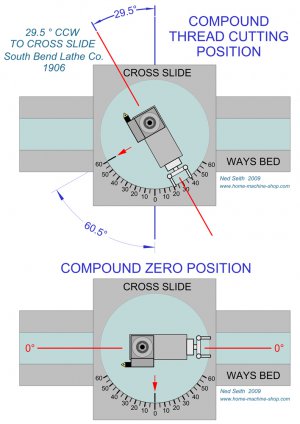The background..... a quick history. I decided to make a drawbar to hold a new to me Albrecht Drill Chuck in my Mill. Day 1, 6 hours, 3/8” thread (via Die) perfect, 1/2” thread (via Die) not straight. Morning Day 2, 3/8” thread (via Die) perfect, 1/2” thread, light single point, finished by Die, not straight again. Afternoon, 3/8” via single point, perfect. 1/2” via single point perfect, except......
The material was reduced from .500 to .492 Threads are perfect but the finished diameter is .464 and the nut is loose fitting. So what happened? How do I account for loss of diameter when threading? Thoughts anyone? Yes, this is my first time single point threading but how did I mess up SO badly.
Regards all, and thanks in advance.
Cheers.
Derek.
Sent from my iPad using Tapatalk
The material was reduced from .500 to .492 Threads are perfect but the finished diameter is .464 and the nut is loose fitting. So what happened? How do I account for loss of diameter when threading? Thoughts anyone? Yes, this is my first time single point threading but how did I mess up SO badly.
Regards all, and thanks in advance.
Cheers.
Derek.
Sent from my iPad using Tapatalk


